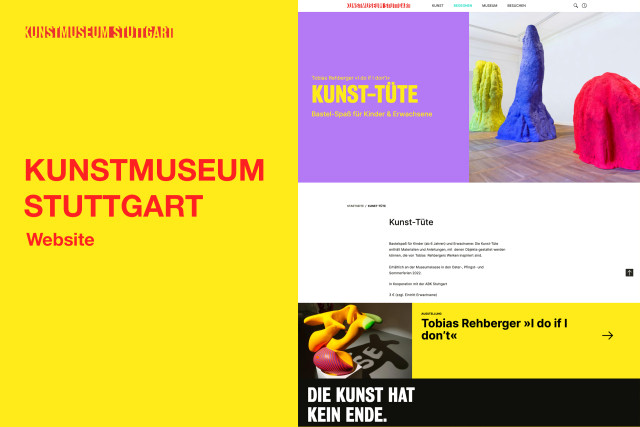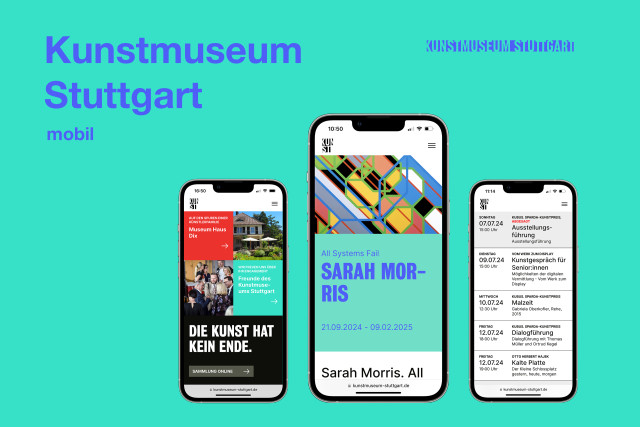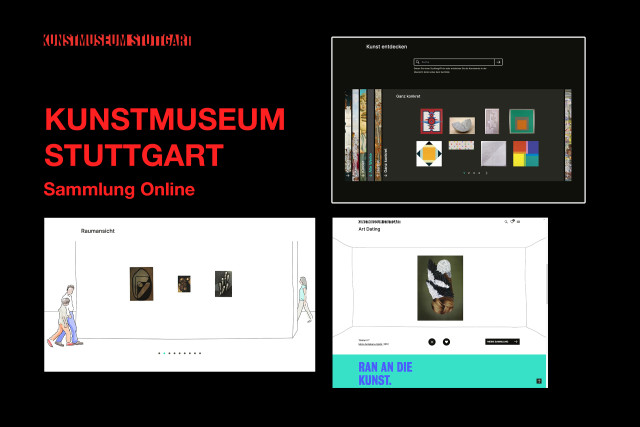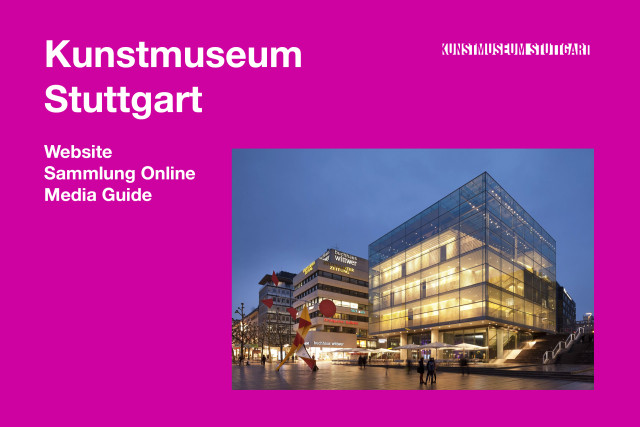The implementation of the new platform goes far beyond a relaunch of the art museum's previous website. We created a digital infrastructure for the organization and publication of all necessary content, websites and web applications. The multi-domain installation we developed in line with the concept created the basis for this highly differentiated administration system: all relevant data of the Kunstmuseum from various databases is brought together and displayed on the different channels.
From information on current and upcoming exhibitions, the calendar of events and guided tours as part of art education to the Kunstmuseum Stuttgart's own presentation and visitor information, everything is created and editorially managed in the content management system. A separate Collection Online section with access to the extensive museum collection, including art dating and digital rooms, uses synchronized access to the MuseumPlus industry software. Information and tours of the collection and exhibition are made available to visitors in the linked Mediaguide app for smartphones.
Project Goal
With this central media server concept, the Kunstmuseum Stuttgart wanted to make art easily accessible to all target groups on different output devices. At the same time, there was a desire to be able to update and maintain this data easily and centrally for the editors on the KMS side. The CMS Drupal was to be a secure and reliable database and form the working basis for creating the content on the museum website, the online collection and the museum app Mediaguide. The content should be easy to create and edit by different editors and only be available for certain output media by means of a rights matrix.
Results
The result of our joint efforts is an effective system consisting of a website that is not only attractively designed, but also user-friendly and easily accessible for the Kunstmuseum Stuttgart's target groups. Through targeted consultation and intensive collaboration, we were able to ensure that the project outcome met the requirements of the art museum and the public. Thanks to efficient management of the content on the central media server, it can now be entered and managed uniformly via a central access point. This saves an enormous amount of time and enables the works to be published simultaneously on the website, the online collection and the media guide. The modular system can be adapted at any time and can be expanded indefinitely to make room for new content, technologies and forms of presentation in the digital museum.
Challenges
The Kunstmuseum Stuttgart, which was named “Museum of the Year” in 2021, wanted to make the excellent presentation of its art collection of 15,000 works accessible not only on site, but also digitally with the same high standards. The presentation of the artworks in different user interfaces and contexts was to be optimally adapted to the respective view in order to offer users an ideal user experience.
The implementation of the design drafts in web-compatible, responsive web design posed a major challenge in this context, making it necessary to extensively adapt modules to the views, processes and structures specified by the design. Despite these high demands, compliance with the accessibility requirements of WCAG 2.2 (conformance level AA) and mobile optimization were ensured.
Summary
The approach of making the museum's works of art digitally accessible and tangible is an important and new approach in this type of implementation with Drupal. We developed this system and the corporate websites without a blueprint and with strict consideration of the specifications for the presentation and output of the individual works. In this way, we have succeeded in developing a system for the art museum that is light and modern in its implementation and operation, without relying exclusively on conventional solutions.
Externally, this results in a modern system that manages to consistently display and output the corporate design across all controlled interfaces. In addition to the classic, pure presentation of content, we were also able to create the possibility for interested parties to put together and save their own digital art collection by integrating the online collection, for example. This personal gallery can then be viewed, modified and forwarded so that the art can also be disseminated in this way. These and numerous other features ensure that the art museum can also promote encounters with art in a new digital way and make it accessible to as many people as possible.
With this Drupal system, the Kunstmuseum Stuttgart has received a secure, expandable and reliable Drupal solution that fulfills all the originally defined requirements and expectations of a modern art mediation platform and establishes new forms of presentation.



